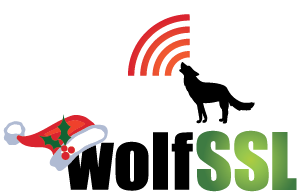Are you a student looking to gain experience in Internet Security, including SSL/TLS, cryptography, MQTT, SSH, and TPM 2.0? wolfSSL is one of the leading producers of Open Source Internet security products, securing over 2 Billion active connections on the Internet today. The wolfSSL “Summer of Security” program is a Summer internship in Bozeman, MT […]
Read MoreMore TagCategory: Uncategorized
wolfSSL now supports latest Intel QuickAssist v1.7 driver and hardware
wolfSSL now has added support for: Intel QuickAssist driver v1.7 (qat1.7.l.4.3.0-00033) Intel QuickAssist 8970 hardware QuickAssist accelerated RSA Key Gen QuickAssist accelerated SHA 3 The new 8970 hardware has 12 additional cryptographic hardware instances. The previous 8950 cards had 6 instances and the new ones have 18. The 8970 card also adds a PCIe (Gen […]
Read MoreMore TagwolfSSL Micrium uC/OS-III and uC/TCP-IP Support
Are you a user of Micrium? If so, you will be happy to know that wolfSSL recently updated support and added TLS client and server examples to the wolfSSL embedded SSL/TLS library for Micrium! We have also run a benchmark of our wolfCrypt/wolfSSL libraries on an NXP Kinetis K70 (Freescale TWR-K70F120M MCU) tower system board […]
Read MoreMore TagwolfSSL smallstack size reduction
wolfSSL v3.15.5 was released last week which features many new additions to the library. One of those new additions is the reduction of the stack usage while using the “smallstack” build option. The goal of wolfSSL’s “smallstack” build is to use at most 1kB of stack. All other memory used is placed on the heap. […]
Read MoreMore TagwolfSSL FAQ page
The wolfSSL FAQ page can be useful for information or general questions that need need answers immediately. It covers some of the most common questions that the support team receives, along with the support team’s responses. It’s a great resource for questions about wolfSSL, embedded TLS, and for solutions to problems getting started with wolfSSL. […]
Read MoreMore TagwolfSSL support for Lighttpd
wolfSSL v3.15.5 was recently released and features many new additions to the library. One of those options is support for Lighttpd. Lighttpd is an open-source web server that is optimized for speed-critical environments while remaining standards-compliant, portable, and flexible. The addition of support for Lighttpd is the perfect match for web servers looking to remain […]
Read MoreMore TagwolfSSL PKCS#11 support
wolfSSL v3.15.5 was released last week, which features many new additions to the library. One of those options is support for PCKS#11. The PKCS#11 standard defines an API to cryptographic tokens. The API defines most commonly used cryptographic object types (RSA keys, X.509 Certificates, DES/Triple DES keys, etc.) and all the functions needed to use, […]
Read MoreMore TagwolfSSL TLS 1.3-only build (#TLS13)
wolfSSL v3.15.5 was released last week which features many new additions to the library. One of those options is the availability of a TLS 1.3 only build, which enables the wolfSSL embedded SSL/TLS library to built such that use of TLS 1.2 and prior protocols is effectively disabled. The TLS 1.3 only build is useful […]
Read MoreMore TagwolfMQTT support for the 5.0 specification is here!
The wolfMQTT client now supports connecting to v5.0 enabled brokers. Handling properties received from the server is accomplished via a customizable callback. The following v5.0 specification features are supported by the wolfMQTT client: AUTH packet User properties Server connect ACK properties Format and content type for publish Server disconnect Reason codes and strings Maximum packet […]
Read MoreMore TagTLS 1.3 combined with FIPS (#FIPS #TLS13)
wolfSSL is a lightweight TLS/SSL library that is targeted for embedded devices and systems. It has support for the TLS 1.3 protocol, which is a secure protocol for transporting data between devices and across the Internet. In addition, wolfSSL uses the wolfCrypt encryption library to handle its data encryption. Because there is a FIPS 140-2 […]
Read MoreMore Tag
